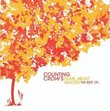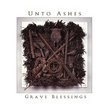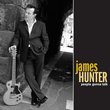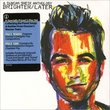| All Artists: Steve Reich, Evan Ziporyn, Leslie Scott, Jeanne LeBlanc, Edmund Niemann, Garry Kvistad, James Preiss, Jay Clayton, Nurit Tilles, Phillip Bush Title: Steve Reich: Music for 18 Musicians Members Wishing: 6 Total Copies: 0 Label: Nonesuch Release Date: 3/31/1998 Genres: Dance & Electronic, Jazz, Pop, Classical Styles: Techno, Avant Garde & Free Jazz, Vocal Pop, Historical Periods, Modern, 20th, & 21st Century, Symphonies Number of Discs: 1 SwapaCD Credits: 1 UPCs: 075597944822, 042282141712, 042282141743, 2605000017874, 781182112940 |
Search - Steve Reich, Evan Ziporyn, Leslie Scott :: Steve Reich: Music for 18 Musicians
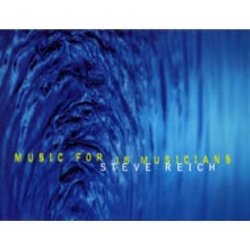 | Steve Reich, Evan Ziporyn, Leslie Scott Steve Reich: Music for 18 Musicians Genres: Dance & Electronic, Jazz, Pop, Classical
The pulsations of Steve Reich's landmark Music for 18 Musicians signify a New Music precipice. Where so much music after World War II explored extremes of tone, time, and register, Reich--and some of his colleagues in th... more » |
Larger Image |
CD DetailsSynopsis
Amazon.com essential recording The pulsations of Steve Reich's landmark Music for 18 Musicians signify a New Music precipice. Where so much music after World War II explored extremes of tone, time, and register, Reich--and some of his colleagues in the 1960s and after--gravitated towards immersion in repetitions and telescoped focus on tonal areas. The combination of piano, vibraphone, marimba, xylophone, clarinets, violin, cello, and female voices is intoxicating in Reich's hands. Reich creates a middle-register, ringing vamp with burnished reed palpitations and, eventually, quick, rolling piano figures emerge in tandem with the percussion. This recording is the second-best known, next to the ECM Records version of the piece, and is warm and colorfully tingling. --Andrew Bartlett Similarly Requested CDs
|
CD ReviewsConsider other recordings... enolcmelca | MINNEAPOLIS, MN USA | 02/02/2001 (3 out of 5 stars) "Many other reviews comment generally on the beauty of this piece. Here are my concise views and recommendations:-This recording is sonically precise, but slow and less organic than others available (e.g. the ECM recording). The sense of the overall tapestry of the work is diminished by the close miking one hears throughout. Certain little blips or phrases are artificially highlighted for too long. Too bad, because re-recordings of other works (such as Music for Mallets, Voices, and Organ) also seem to ephasize individual instruments above an overall wash from the ensemble without picking up on little bits of phrases from one instrument too much.Recommendations: --For a first listen, the ECM recording is essential. It preserves the sense of this piece occurring in a performance space. Having heard the piece live twice, the role of reverb and the concert hall is considerable. Only the ECM recording comes close to hearing this piece live.--If you want a dead-on reading, with maximum clarity of each line, I recommend the Ensemble Modern recording. Their performance is closer to what seems the natural tempo. Their mixing establishes the interplay between the parts very clearly without "artifically" highlighting certain parts too much, as seems to happen in Reich's second recording." One of my favorite pieces of music ever composed somethingexcellent | Lincoln, NE United States | 11/28/2005 (5 out of 5 stars) "Composed in 1976 by Reich, this is a piece that goes down as a classic in my view. Although some of his earlier work with tape manipulations now sounds a bit dated and simply doesn't hold up as well, the beauty of Music For 18 Musicians still sounds as fresh to me now as anything that I've heard lately. This particular release on Nonesuch, recorded in 1996 is actually about 11 minutes longer than the original composition, but that length really only adds to the bliss of the piece. At 14 tracks and almost 67 minutes of music, it's just over an hourlong excursion into what feels like a safer place. Performed by musicians, just as the title states, it actually might fall into what many would consider 'trance' music. It's highly repetitive, and while it bears no relation to the crap being pedalled as trance music these days, it's nearly as hypnotic as any music you'll find. With vocals, stringed instruments, lots of percussive elements (vibraphone, gamelan, marimba, maracas), pianos, and clarinets, it's one of those pieces of music that you can trace back to as a starting point for not only individual artists, but genres as well. It blends non-western, classical, and even a touch of jazz for something that was original at the time, and still stands solidly on that ground. With all this praise I'm heaping on this piece, I must warn that if you don't enjoy repetitive music, you probably won't appreciate this release quite as much. While it is repetitive, though, it's far from minimal (although it's grouped into that category often). Unfurling over the course of 11 different parts, as well as phasing pieces that lead into and end the overall composition, it breathes like something real and organic as each instrument and voice take their place with the harmony and again blend back down into the mix. It's constantly moving and shifting, and while there are moments of quieter transition, there are also ones of breathtaking splendor as melodies overlap and change speed while different instruments come into and out of focus. It's like taking several different minimal paintings printed on transparencies and subtely shifting them over one another to create new pieces as you see colors blend into one another and fold into something new each time. Considering that the piece is one that's performed by actual people, the juxtaposition of the different elements is quite amazing (of course, imagining how you would program something like this electronically also staggers the mind), and as mentioned before, you can hear little bits of everyone from Tortoise to different electronic artists like Vladislav Delay and Gas (Mike Ink) having developed parts from it. While their were groundbreaking pieces both before and after it, it's one of those recordings that will envelope you if you allow it to. So, if you're a fan of modern electronic music or even post rock, you should probably hunt down this release and hear it at least once. If you can, simply stop doing everything else, pop it in the CD player and relax with it on a pair of headphones for the entirety of the release. You'll come to just under 70 minutes later when the CD stops spinning, and chances are you'll want to do it again sometime. I certainly do. (from almost cool music reviews)" The Ravishing Textures of Life liberty janus | Seattle, WA USA | 02/03/2004 (5 out of 5 stars) "When a work of this stature invokes a level of profound and richly rewarding response from a listener, its difficult to know, or to offer any explanation for, just what it is that separates a work of this magnitude from music, even excellent music, which just doesn't reach this level of expression. And this isn't music that's likely to turn everybody's crank, either, as by any standard that considers the vast range of kinds and qualities of music available in the world today, its unique, unusual, and insistently individualistic in almost every way.This music is capable of functioning on any number of different levels, as the many Amazon reviews show. On a less complex level of response its ravishing surface textures can be accepted as simple ravishment, its simple harmonic structure can be enjoyed for its simplicity, and its flowing tempos can absorb a listener in the sheer sense of encompassing flow. Yet for many listeners the amazingly rich washes of sound arising from the intricate interlacing of simply repeated but subtly shifting motifs engender a complex, suffusing experience that somehow transcends any attempt to limit the listening response to individual elements or individual emotional responses. Like any great musical work this piece offers a more encompassing, synthesized representation of a way of looking at, responding to, and understanding the world, and any listener fortunate enough to have their synapses firing along the same lines is apt to experience a truly involving and powerful response.This music offers a powerful metaphor of life itself. Not literal, not representational, not discursive, but cogent, coherent, and rich with the depth and involving flow of life. And not just a slice of life, but a whole, urgently encompassing sense of life's textures, and moods, and endless flowing depths and dynamics. It's really a glorious thing that music can do this, and Reich's stunning achievement with "Music For 18 Musicians" was to accomplish this with his own new vocabulary, which he brought to fully realized maturity in this piece, and which so clearly and simply reduces commentary about movements and styles to insignificance in the face of such patiently and potently mesmerizing expression, unfolding its layers of sound, meaning, and complexity out of such basic tools.But it's also just simply a gorgeous example of sonic manipulation, with seemingly endless textures flowing in and out with the carefully modulated interplay of repeated tones and motifs. There's no need to invoke aesthetic theory, or to listen to this piece only when a totally involving musical symbolism is needed to reaffirm one's connection to the world, because its rich textural flow functions just fine as simple ravishment, and its simplicity of structure can soothe and involve simultaneously, and that flow - that glorious, by turns gentle and then insistent flow, can just carry a listener away in rapture.A seminal work like "Music For 18 Musicians" occupies a rare space, and accomplishes with seeming ease what lesser works are unable to do, and in doing so demonstrates the function and the power of truly great music to organize sound into a coherent symbolic representation of life's endless flowing textures. And that's a wonderful thing."
|

 Track Listings (14) - Disc #1
Track Listings (14) - Disc #1


